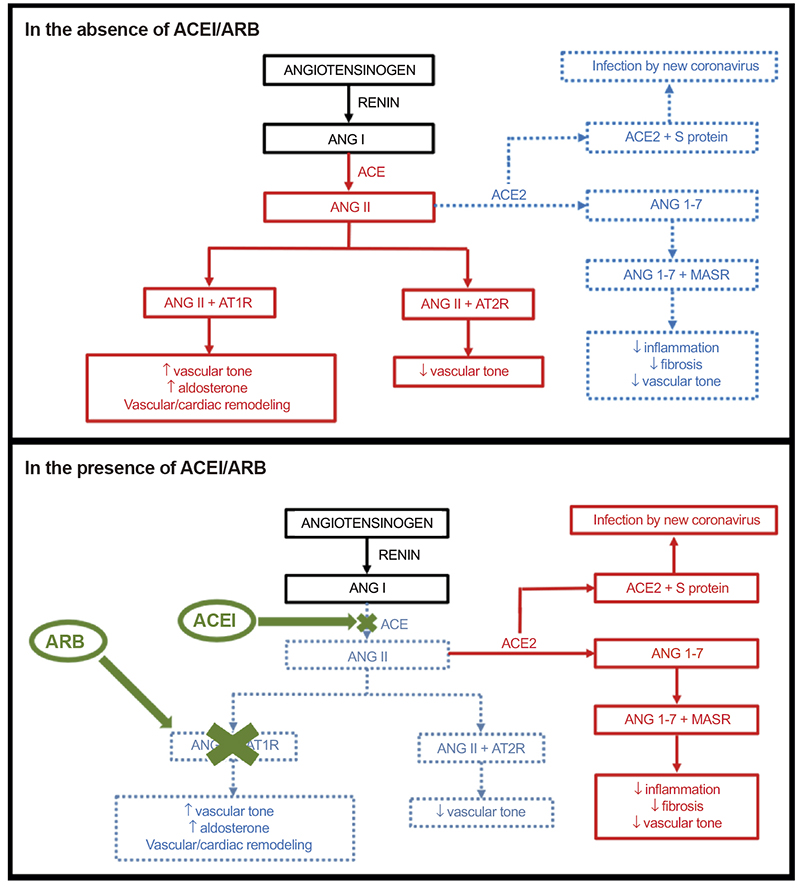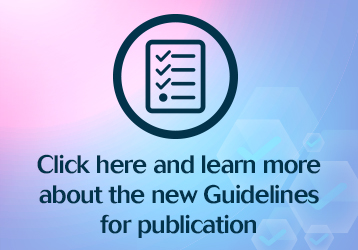Volume 33, Nº 4, July and August 2020
DOI: https://doi.org/10.36660/ijcs.20200081
VIEWPOINT
Challenges in Pharmacological Management of Cardiovascular Diseases in Covid-19: do Benefits Outweigh Risks?
Samuel de Sousa Pedro
Fernanda Carla Ferreira de Brito
Christianne Bretas Vieira Scaramello
Dr. Christianne Bretas Vieira Scaramello

Figure 2 – Schematic representation of the renin-angiotensin-aldosterone system in two different situations: in the absence and in the presence of pharmacological interventions using angiotensin-converting enzyme inhibitors (ACEIs) and angiotensin II AT1 receptor blockers (ARBs). For each situation there is a highlighted axis (red) and a faded axis (blue). Angiotensinogen is produced in the liver as a renin (enzyme secreted by the kidney) substrate and generates angiotensin I (ANG I), an inactive peptide. Through the action of angiotensin-converting enzyme (ACE), ANG I is converted into angiotensin II (ANG II), which determines its effects by binding to its receptors AT1 (AT1R) and AT2 (AT2R). The action of angiotensin-converting enzyme 2 (ACE2) on ANG II leads to the production of angiotensin 1-7 (ANG 1-7), which determines various effects by binding to Mas receptors (MASR). Also, ACE2 is able to bind to S protein in the virion, favoring cell invasion by the new coronavirus.13,14
Introduction
Cardiovascular diseases (CVD) are the main cause not only of global mortality but also of reduced quality of life. They cover ischemic heart disease, stroke, heart failure, peripheral artery disease, and various other heart and vascular conditions. In 2017, CVDs caused about 17.8 million deaths worldwide, corresponding to 330 million years of life lost and another 35.6 million years of life with disabilities. Almost 80% of deaths occur in lowand middle-income countries, such as Brazil, where the occurrence of CVDs and their risk factors are on the rise as a result of an ongoing epidemiological transition.1 In low-income countries CVDs greatly affect working-age populations, and the total economic loss resulting from this group of diseases is high, representing 2% of Gross Domestic Product. In addition, the disability caused by CVDs has economic consequences at multiple levels: individual, family, economic agents, public institutions, government, and society as a whole.2
Keywords: Cardiovascular Diseases/mortality; Coronavirus/ complications; COVID-19/complications; Pandemics; SARS Severe Acute Respiratory Syndrome; Dyspnea; Fever; Anticoagulants.











